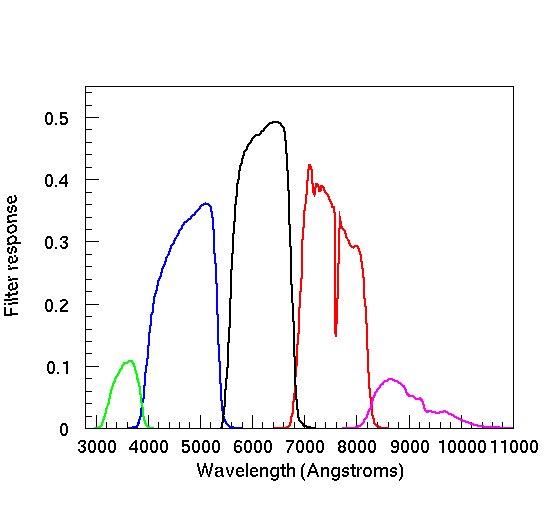What is "color"?
-
 by
JeanTate
by
JeanTate
Professionals and oldbies can stop reading now1; this post/thread is for newbies who are mystified about this very common word!
When astronomers use the word "color" they intend a very specific, and very precise, meaning. And that meaning is only vaguely related to the everyday meaning 😮 So it can be very, very confusing.
The Sloan Digital Sky Survey - SDSS for short - has two major parts, called "imaging" (done with a "camera") and "spectroscopy" (done with a "spectrograph").
The SDSS camera is somewhat like the one in your cell (mobile) phone, or your digital camera, in that it has a detector (a CCD) made up of lots of pixels. Unlike your own camera, the SDSS camera uses (or rather used; it's now retired) five different filters (also called 'bands'). So for each patch of sky it took snaps of, it actually created five separate images. In Galaxy Zoo, the SDSS images we were served up to classify were created by using only three of the five images.
The five filters (bands) are called u, g, r, i, and z. The last one - z - is a particularly unfortunate choice, because the same letter is also used to mean 'redshift'! The correspondence between the bands and the colors we see with our eyes is not very straight-forward; very roughly2, purple and blue fall in the u band, green to yellow the g band, and red in the r band; the i and z bands are in the infrared, so we can't 'see' in them.
For an object3 imaged by SDSS - a star, or a galaxy, say - the software (called 'the photometric pipeline') converts the data from each CCD pixel into a brightness, or intensity. Which is a number. Expressed in units called "magnitudes". Which are, to everyone except astronomers, utterly insane! For example, unlike the magnitude of an earthquake measured on the Richter scale - the stronger the earthquake, the greater the magnitude - magnitudes in astronomy go the other way (a 10th magnitude star is fainter than a 9th magnitude one).
Because there are five filters (images), there are five brightnesses/intensities; one for each filter. And five magnitudes. When you load up data into a dashboard in Tools, you will almost certainly have a column 'u (mag)', and a 'g (mag)' one, and ...
Astronomers go to truly extraordinary lengths to make sure that the magnitudes in one band are comparable to those in another band4 (can you guess why?). This enables them to say, with great confidence, that "this star is brighter in the u band than in the g band" (for example). And they can even say how much brighter!
How?
By subtracting the g-band magnitude from the u-band one. Giving a (u-g) magnitude5.
Or a color. A (u-g) color.
For example, if the u-band magnitude of a star is 16.5, and its g-band one 17.2, then the (u-g) band magnitude is -0.7. Its has a color of -0.7; more accurately, a (u-g) color of -0.7.
With five bands, there are ten unique colors (counting (u-g) as the same as (g-u), for example). Which gives you a lot to play with, in Tools.
Have fun! 😄
1 Just kidding; please jump in and correct my mistakes, add your own explanations, etc.
2 If it helps, here is a graph/plot/chart of the 'filter response' (from the SDSS website):

3 Don't forget that, in Zooniverse-speak (and all Tools), an object is a "subject"!
4 If you're interested in the details, ask! 😃
5 Which will, of course, be negative! Yes, remember that "brighter" means "smaller in magnitude"
Posted